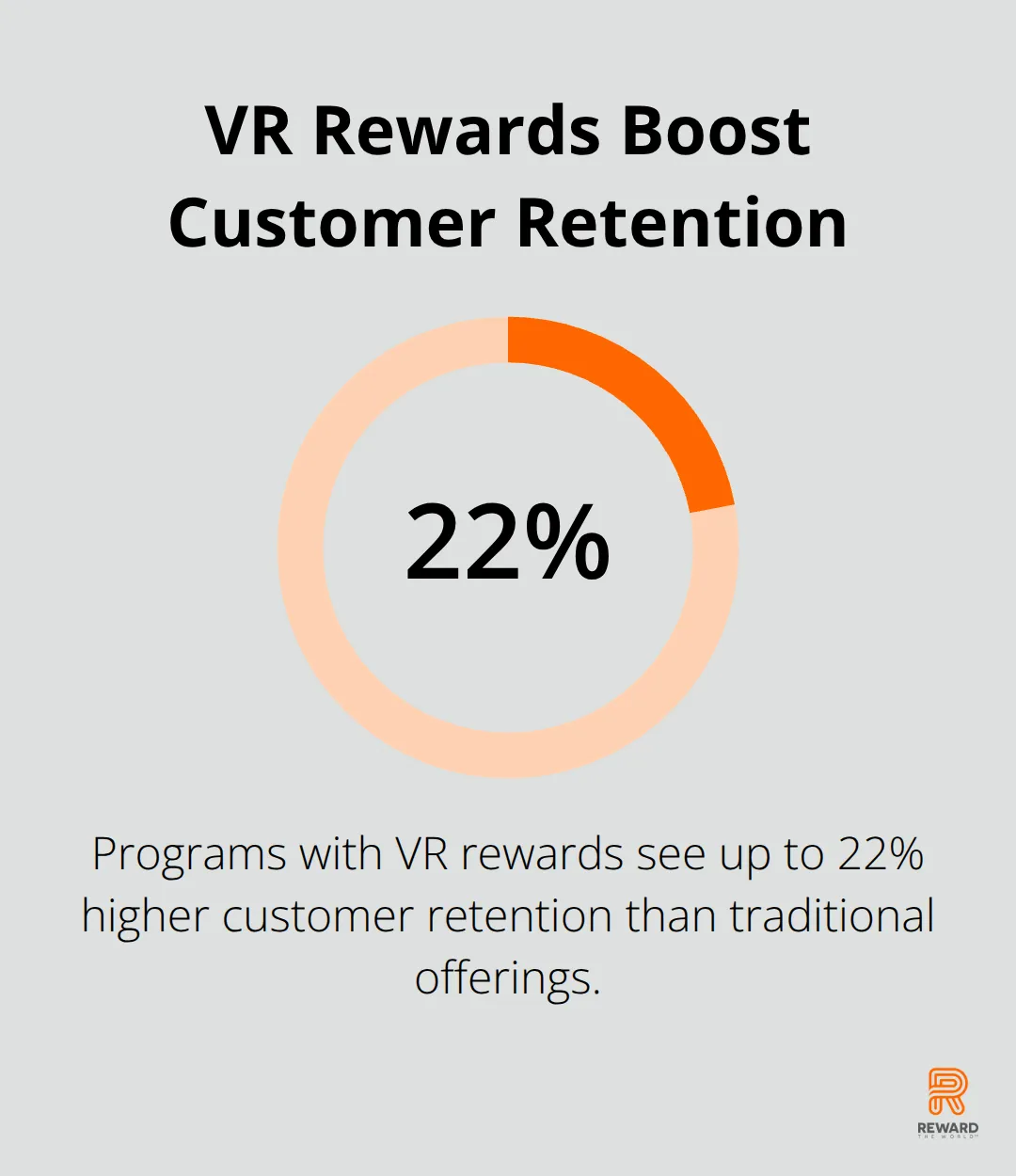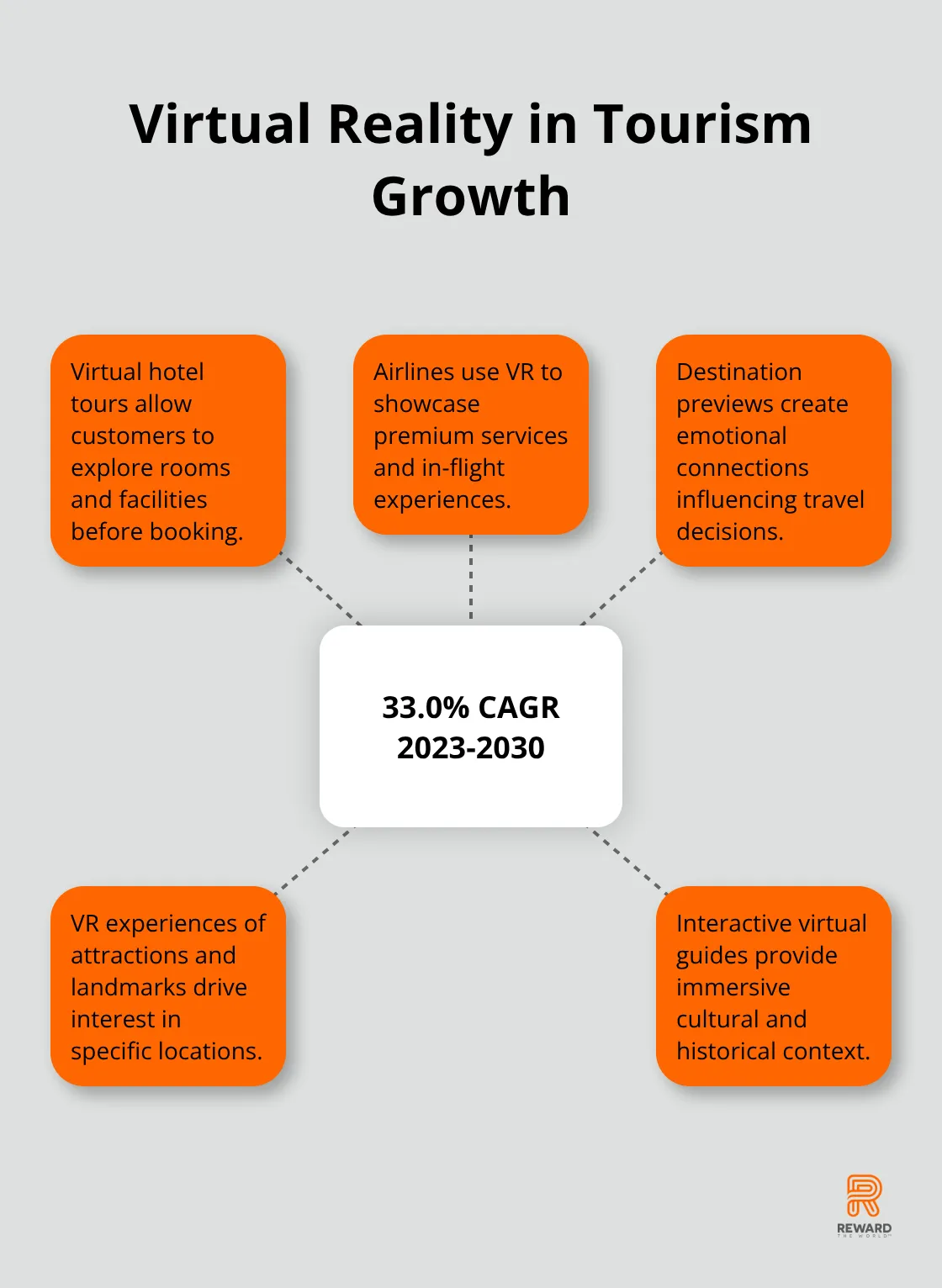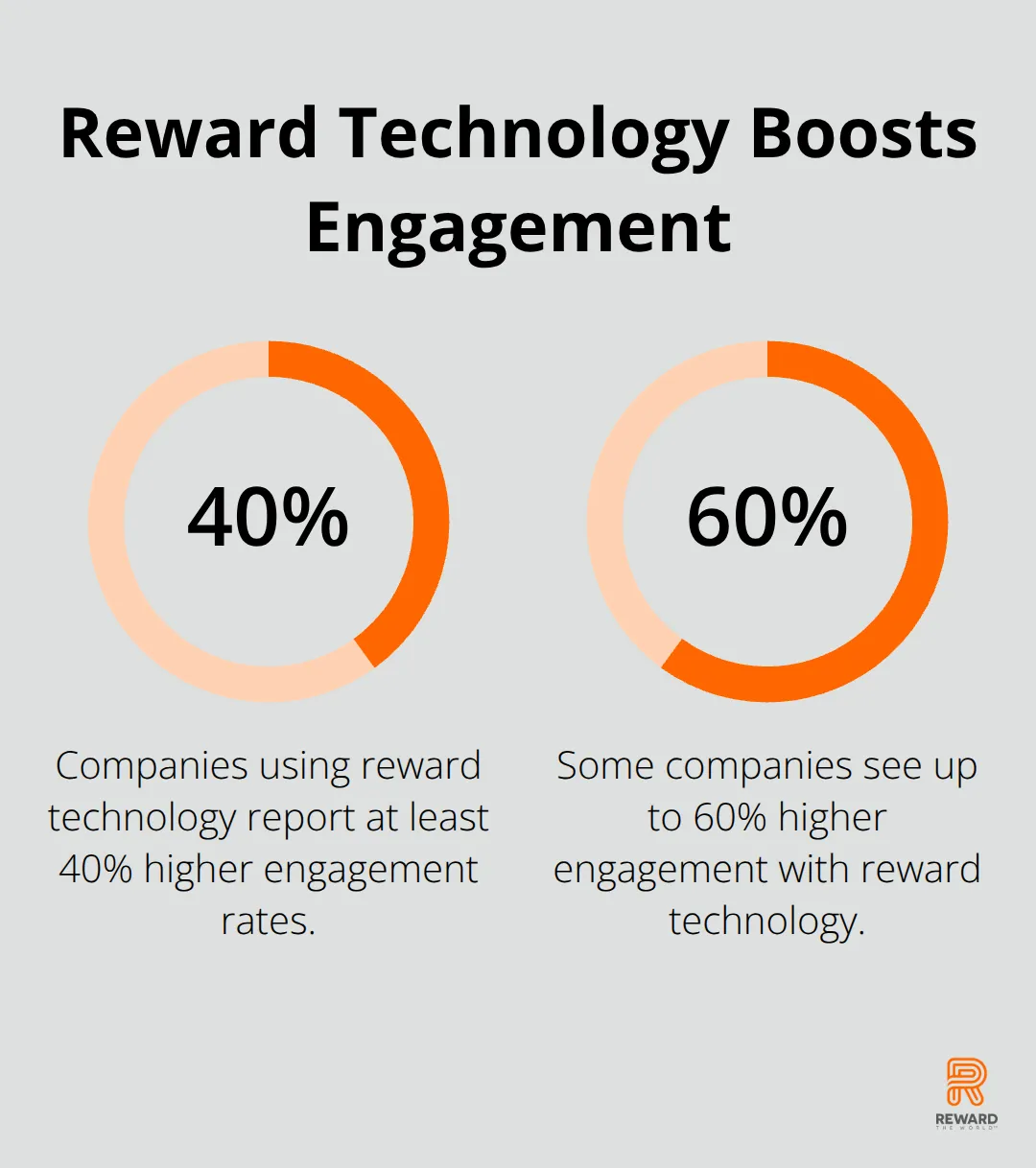
Customer loyalty programs are evolving beyond traditional points and discounts. Virtual reality technology opens new possibilities for experiential loyalty that creates deeper emotional connections with brands.
We at Reward the World see VR transforming how companies engage customers through immersive experiences. The technology shifts rewards from transactional benefits to memorable brand interactions that drive long-term loyalty.
How Virtual Reality Creates Deeper Customer Connections
VR Experiences Build Emotional Brand Bonds
VR transforms customer engagement by creating emotional connections that traditional rewards cannot match. Marriott Hotels demonstrated this power through their VR Postcards program, which allowed customers to virtually visit destinations like the Andes Mountains and Volcanoes National Park. This immersive approach generated significantly higher engagement rates compared to standard promotional materials.
Studies show that programs incorporating VR rewards experience up to 22% increase in customer retention compared to traditional offerings. The technology works because it triggers emotional responses through sensory immersion. Customers feel genuinely connected to brand experiences rather than simply completing transactions.

Interactive Rewards Drive Higher Participation
VR gamification elements boost customer participation by making reward experiences interactive and memorable. Nike’s AR scavenger hunts through the SNKRS app allow users to find virtual sneakers in real locations, which unlocks exclusive rewards and creates brand excitement. The Premier League achieved a 95% form completion rate with their AR Trophy Scavenger Hunt, demonstrating how interactive elements dramatically increase engagement.
Gaming market projections show steady growth with 77% of game developers expecting industry expansion in 2025, indicating massive opportunities for VR gaming rewards in loyalty programs. Companies implementing gamified VR experiences report higher customer retention rates because participants actively engage with brands rather than passively receive benefits.
Personalized Virtual Environments Boost Satisfaction
VR enables unprecedented personalization in customer rewards by creating tailored virtual environments based on individual preferences and behaviors. Lady M Confections sold out their entire product line after creating personalized AR experiences for the Mid-Autumn Festival (showing how customized virtual rewards drive real business results).
The technology allows brands to analyze customer data from loyalty programs and create unique virtual experiences that match specific interests and demographics. This personalization approach leads to higher satisfaction rates because customers receive rewards that feel specifically designed for them. The result creates stronger brand loyalty and increased program participation that sets the stage for examining real-world applications across different industries.
Which Industries Lead VR Reward Innovation
Retail Brands Transform Shopping Through Virtual Showrooms
Retail brands abandon traditional discount strategies and create immersive virtual showrooms that drive actual purchase decisions. Walmart uses VR for employee training programs, which demonstrates how retail giants recognize VR’s practical value beyond customer-facing applications. The technology works because customers interact with products in virtual environments before they make purchase commitments (this reduces return rates through style-specific sizing suggestions).
Smart retailers create virtual fitting rooms and product demonstration spaces that generate higher conversion rates than static online catalogs. These VR experiences collect valuable customer behavior data through interaction tracking, which provides insights that traditional shopping methods cannot capture. The approach transforms window shopping into active product engagement that leads to measurable sales increases.
Travel Companies Convert Browsers Into Buyers
Travel companies leverage virtual destination previews to convert browsing customers into booking customers through immersive location experiences. The Global Virtual Reality in Tourism market projects a 33.0% compound annual growth rate from 2023 to 2030, which indicates massive industry confidence in VR’s revenue potential. Airlines and hotels use virtual tours to showcase premium services and destinations, creating emotional connections that influence booking decisions more effectively than traditional photography and video content.
These virtual experiences allow customers to explore hotel rooms, walk through resort facilities, and experience destinations before they commit to bookings. The immersive nature of VR creates emotional investment in travel decisions that static images cannot match.

Gaming Industry Sets VR Reward Standards
Gaming companies lead VR reward implementation because their audiences already embrace immersive technology experiences. The gaming market will reach $205 billion by 2026, which creates enormous opportunities for VR gaming rewards in loyalty programs. Entertainment brands offer virtual concert experiences and exclusive gaming content as rewards (these generate participation rates that exceed traditional loyalty program benchmarks).
These industries prove that VR rewards work best when they align with customer expectations for interactive, memorable experiences rather than passive benefit consumption. However, successful VR reward implementation faces significant technical and financial obstacles that companies must address strategically.
What Obstacles Block VR Reward Success
Technology Costs Create Implementation Barriers
VR reward programs demand substantial upfront investments that many companies struggle to justify. High-end VR headsets cost $500 to $1,000 per device, but businesses need multiple units plus development expenses that can reach significant amounts for custom VR experiences according to industry estimates. Mixed reality shipments will grow from 3.3 million units in 2025 to over 15.2 million units by 2029 according to IDC, yet device costs remain prohibitive for small businesses.
Companies must calculate total cost of ownership including hardware maintenance, software updates, and staff training expenses before they commit to VR reward initiatives. Smart businesses start with pilot programs that target high-value customers rather than full-scale rollouts. This approach allows companies to test VR reward effectiveness while they control costs and gather performance data that justifies expanded investment.
Infrastructure Demands Challenge Program Delivery
VR rewards require robust technical infrastructure that many companies lack internally. Programs need high-speed internet connections, cloud storage capacity, and specialized software platforms that integrate with existing loyalty systems. Device compatibility issues create additional complexity since customers use different VR headsets with varying technical specifications and capabilities.
Companies succeed when they partner with specialized VR development firms rather than build internal capabilities from scratch. These partnerships provide technical expertise while they reduce infrastructure investment requirements. Successful implementations focus on web-based VR experiences that work across multiple devices instead of platform-specific applications that limit customer access.
ROI Measurement Requires New Metrics
Traditional loyalty program metrics fail to capture VR reward effectiveness (this forces companies to develop new measurement frameworks). Engagement rates, session duration, and emotional response indicators become more important than simple redemption statistics. Companies that track reward technology report 40-60% higher engagement compared to traditional programs, but measuring long-term customer value requires sophisticated analytics tools that connect virtual interactions to actual purchase behavior and retention outcomes.
Businesses must establish baseline metrics before they launch VR programs to measure improvement accurately. The most successful companies track both immediate engagement metrics and long-term customer lifetime value changes to demonstrate VR reward program effectiveness to stakeholders.

Final Thoughts
Virtual reality represents the biggest shift in customer loyalty programs since digital transformation began. Companies that implement VR rewards now position themselves ahead of competitors who still rely on traditional point systems and discount structures. The technology creates experiential loyalty that builds emotional connections between brands and customers through immersive interactions that traditional rewards cannot replicate.
Early adopters gain significant competitive advantages because they capture customer attention in ways that standard loyalty programs fail to achieve. The 40% increase in participation rates that VR programs generate demonstrates clear business value for companies willing to invest in this technology. These first-movers establish brand leadership positions while their competitors struggle with outdated reward strategies (making the timing perfect for forward-thinking businesses).
The most successful approach combines VR experiences with established reward platforms rather than replaces existing systems entirely. We at Reward the World understand that hybrid loyalty solutions work best when they integrate cutting-edge technology with proven reward delivery methods. VR rewards will become standard practice as technology costs decrease and customer expectations for interactive experiences increase.
